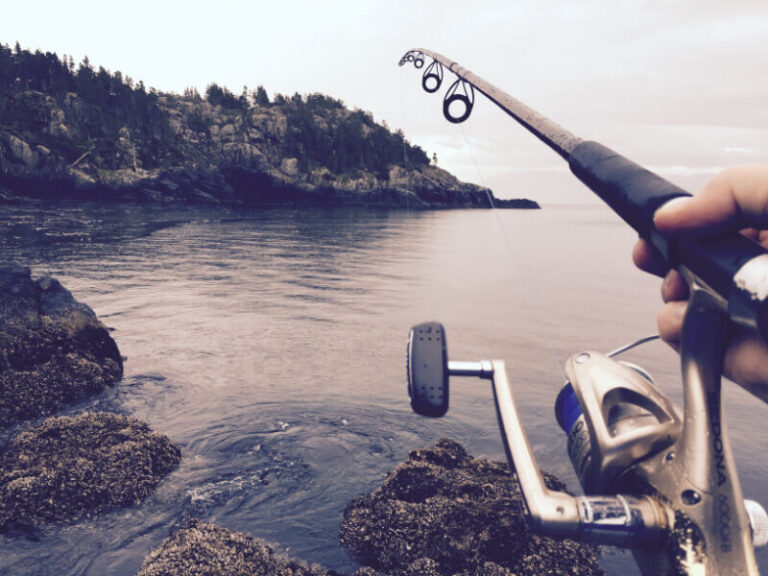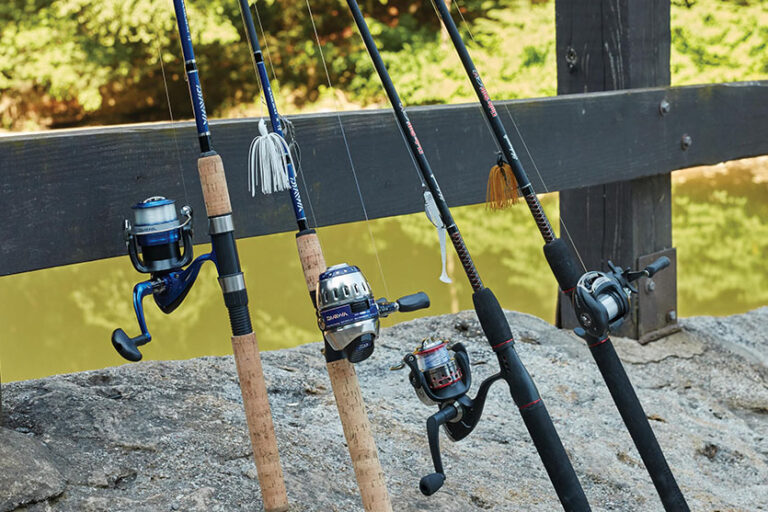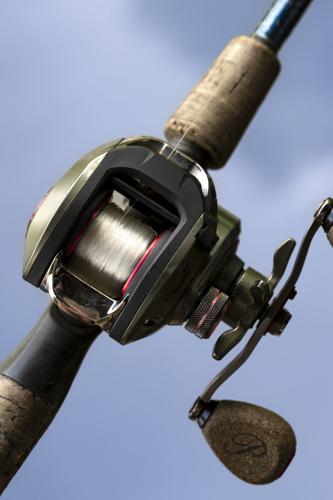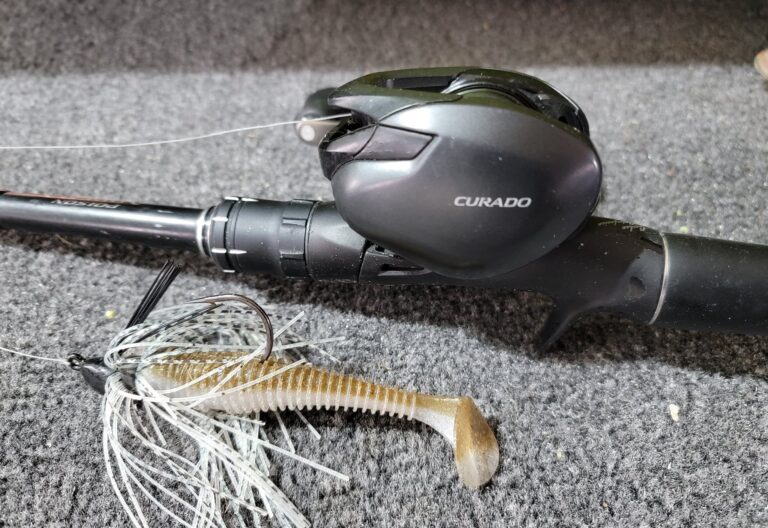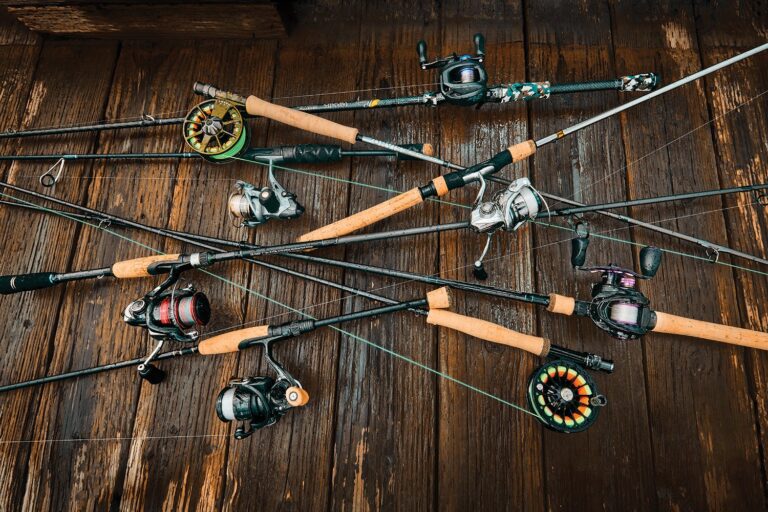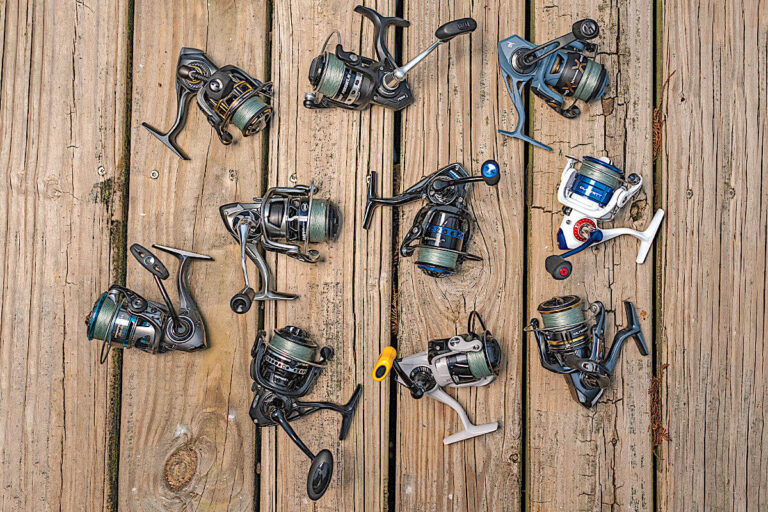The key features to look for in spinning gear are durability and smoothness of operation. These features contribute to a reliable and efficient spinning experience, allowing for better control and overall performance.
When considering spinning gear, it is crucial to find equipment that can withstand use over time while providing a seamless spinning motion. Durability ensures that the gear can handle the strain of reeling in fish and withstands any harsh conditions it may encounter.
Additionally, smooth operation enables the angler to cast and retrieve with ease, enhancing accuracy and reducing line tangles. These key features ultimately enhance the fishing experience and maximize the angler’s chances of success.

Credit: www.amazon.com
Understanding The Basics Of Spinning Gear
Differentiating Between Spinning Gear And Other Fishing Gear Types
Spinning gear is one of the most popular fishing gear types among anglers, but how does it differ from other options? Let’s explore the key differences:
- Spinning gear is designed for versatility and ease of use, making it suitable for beginners and experienced anglers alike.
- Unlike baitcasting gear, spinning gear features a fixed spool that allows for smoother and more controlled casting.
- Unlike fly fishing gear, spinning gear does not require specialized techniques such as fly line management or complex casting motions.
- Spinning gear typically uses a spinning reel with a bail that allows for easy line retrieval and casting.
- Spinning gear is known for its ability to cast lightweight lures and baits with precision and accuracy.
The Advantages And Disadvantages Of Using Spinning Gear
Spinning gear comes with its own set of advantages and disadvantages. Here’s a closer look at both sides:
Advantages:
- Ease of use: Spinning gear is often the go-to choice for beginners due to its user-friendly design and forgiving nature.
- Versatility: Spinning gear can handle a wide range of fishing techniques and is suitable for freshwater and saltwater fishing.
- Casting distance: Spinning gear excels in casting lightweight lures and baits over long distances, allowing anglers to reach hard-to-reach spots.
- Line capacity: Spinning reels typically have a large line capacity, allowing for longer fights with larger fish.
- Price: Spinning gear is generally more affordable compared to other fishing gear options, making it accessible to a wider range of anglers.
Disadvantages:
- Line twist: Spinning gear can be prone to line twist, especially if the line is not properly spooled onto the reel.
- Limited line control: Compared to baitcasting gear, spinning gear offers less control over the line during the cast, which may result in fewer casting options.
- Beginner-friendly limitations: While spinning gear is great for beginners, more experienced anglers may find the gear limiting in terms of advanced techniques and finesse fishing.
Understanding the basics of spinning gear is crucial when it comes to choosing the right fishing gear for your needs. By considering the differences between spinning gear and other types, and weighing the advantages and disadvantages, you can make an informed decision that aligns with your fishing style and preferences.
So, whether you’re a novice or a seasoned angler, spinning gear may just be the perfect fit for your next fishing expedition.
Choosing The Right Spinning Reel
Whether you are a seasoned angler or new to the world of fishing, choosing the right spinning reel is crucial for a successful day on the water. A spinning reel is a vital piece of spinning gear that plays a significant role in your fishing experience.
Let’s explore the key features to look for when selecting the perfect spinning reel.
The Importance Of Reel Size And Weight For Different Fishing Applications
- Matching the reel size and weight to your fishing application is essential for optimal performance.
- Smaller reels are ideal for light tackle fishing, such as targeting small game fish or finesse techniques.
- Larger reels are better suited for heavy-duty fishing, like targeting big game species or fishing in saltwater environments.
- Consider the weight of the reel as it affects your casting and overall fishing comfort. Lighter reels are typically more comfortable for all-day use.
Evaluating The Gear Ratio And Its Impact On The Retrieval Speed
- The gear ratio determines how fast the line is retrieved with each turn of the handle.
- Higher gear ratios, such as 6.0: 1 or 7.0:1, provide faster line retrieval, making them suitable for techniques that require quick and aggressive retrieves.
- Lower gear ratios, like 5.2: 1 or 4.7:1, offer more power and are ideal for techniques that require slow presentations or when fishing with heavy baits.
- Consider the fishing techniques you’ll be using and match the gear ratio accordingly to ensure an optimal retrieval speed.
Understanding The Drag System And Its Significance In Handling Different Fish Species
- The drag system is responsible for controlling the amount of resistance the fish feels when pulling your line.
- Look for reels with a smooth and reliable drag system that can handle the targeted fish species.
- Adjustable drag systems allow you to fine-tune the resistance, giving you better control over fighting powerful fish.
- For saltwater fishing or targeting larger game fish, consider reels with stronger drag systems to handle the increased pressure.
Examining The Reel Materials And Construction For Durability And Performance
- Reels made from high-quality materials like aluminum or carbon fiber offer enhanced durability and performance.
- Lightweight and corrosion-resistant materials are particularly important for saltwater fishing.
- Pay attention to the construction quality, including the presence of sealed bearings or waterproofing, to ensure longevity and protection against the elements.
Considering Additional Features Like Anti-Reverse, Line Capacity, And Line Management Systems
- Anti-reverse is a crucial feature that prevents the handle from spinning backward when a fish pulls on the line.
- Check the line capacity of the reel to ensure it can accommodate the amount of line you need for your fishing style.
- Look for reels with effective line management systems, such as a braid-ready spool or line roller, to optimize casting and reduce line tangling.
- Additional features like interchangeable handles or ergonomic designs can improve comfort during extended fishing trips.
Now that you are equipped with an understanding of the key features, you can confidently choose the right spinning reel that suits your fishing needs. Happy fishing!
Selecting The Ideal Spinning Rod
A spinning reel is only as good as the rod it’s attached to. When it comes to selecting the ideal spinning rod, there are several key features to consider. From rod length to material construction, each aspect plays a crucial role in ensuring optimal performance and overall angling experience.
Let’s delve into the key points you need to keep in mind:
Identifying The Appropriate Rod Length For Specific Fishing Techniques And Environments
- The length of the rod can greatly impact your fishing experience, as it determines the distance and accuracy of your casts.
- Shorter rods, around 5 to 7 feet, are ideal for fishing in tight spaces or when targeting smaller fish species.
- Longer rods, typically ranging from 7 to 9 feet, provide increased casting distance and excel in open areas or when targeting larger fish.
- Consider the type of fishing you prefer and the environment you’ll be fishing in to determine the appropriate rod length for your needs.
Understanding Rod Power And Action And Their Influence On Casting And Fighting Fish
- Rod power refers to the amount of force required to bend the rod. It is usually categorized as light, medium, or heavy.
- Light power rods are best suited for smaller fish and finesse techniques, providing increased sensitivity and delicate control.
- Medium power rods are versatile and can handle a wide range of fishing scenarios, making them a popular choice for many anglers.
- Heavy power rods offer increased strength and are suitable for handling larger fish species and heavy cover situations.
- Rod action refers to where the rod bends along its length. Faster action rods bend closer to the tip, while slower action rods bend more towards the base.
- Faster action rods are more sensitive and provide increased casting distance and accuracy.
- Slower action rods offer better control and are ideal when fishing with live bait or when targeting fish that require a slower, more subtle presentation.
Evaluating The Rod Material And Construction For Strength, Sensitivity, And Responsiveness
- Graphite and fiberglass are the two main materials used in rod construction, each offering distinct advantages.
- Graphite rods are lightweight, sensitive, and provide excellent strength, making them a popular choice for many anglers.
- Fiberglass rods, on the other hand, offer increased durability and are better suited for heavy-duty applications and larger fish species.
- It’s important to consider the balance between strength, sensitivity, and weight when choosing the rod material that best suits your fishing style and target species.
Choosing The Right Rod Handle And Grip Design For Comfort And Control
- The rod handle plays a crucial role in providing comfort and control during extended fishing sessions.
- Cork handles are widely favored for their ergonomic design, providing excellent grip and comfort.
- Eva foam handles offer a more affordable alternative and are highly durable, making them suitable for harsh environments.
- Some rods feature specialized grip designs, such as split grips or full-length handles, allowing anglers to choose their preferred style for maximum comfort and control.
Considering Additional Features Like Rod Guides, Reel Seats, And Overall Rod Balance
- Rod guides, typically made of stainless steel or ceramic, help guide the fishing line along the rod and prevent friction, ensuring smooth casts.
- High-quality guides with smooth inserts and sturdy frames can greatly enhance casting distance and overall performance.
- Reel seats are the part of the rod where the reel is attached. Look for seats that securely hold the reel in place and provide easy access to the reel’s controls.
- Balancing the rod is essential for comfortable and efficient casting. Consider the weight distribution and overall feel of the rod to ensure it suits your angling style and preferences.
By understanding the key features of a spinning rod and considering the specific fishing techniques and environments you’ll be encountering, you can confidently select the ideal spinning gear that suits your needs and enhances your angling experience. Whether you’re targeting small fish in tight spaces or battling large fish in open waters, a well-chosen spinning rod can make all the difference.
Essential Accessories For The Spinning Gear
Spinning gear is an essential tool for any angler, whether you’re a beginner or a seasoned pro. But what makes a spinning gear truly effective? In this section, we will focus on the essential accessories that can enhance your spinning gear experience and improve your chances of a successful fishing trip.
Exploring The Various Types Of Fishing Lines And Their Compatibility With Spinning Gear
- Monofilament: A popular and versatile choice, monofilament lines are known for their flexibility and ease of use. They are compatible with most spinning gears and provide good knot strength.
- Fluorocarbon: Fluorocarbon lines are virtually invisible underwater, making them ideal for finicky fish species. They also have excellent abrasion resistance and are suitable for spinning gear.
- Braided: Braided lines offer exceptional strength and sensitivity, making them suitable for targeting larger fish. However, they can be prone to tangling on spinning gear, so ensure your reel is compatible.
Understanding The Importance Of Leader Materials And Their Role In Preventing Line Breaks
- Fluorocarbon leaders: Adding a fluorocarbon leader between your main line and lure can help prevent line breakage, especially when fishing in areas with sharp structures or toothy fish species.
- Wire leaders: Wire leaders are necessary when targeting toothy fish such as pike or muskie. They provide excellent resistance to their sharp teeth, preventing your line from being bitten off.
Choosing The Right Fishing Hooks Based On The Target Fish Species And Fishing Technique
- Circle hooks: These hooks are designed to minimize hooking injuries and are particularly effective when practicing catch and release. They are suitable for a wide variety of fish species and fishing techniques.
- J-hooks: J-hooks are versatile and can be used for both live bait and artificial lures. They come in various sizes and styles, making them suitable for different fish species and fishing conditions.
Considering The Use Of Additional Accessories Like Swivels, Sinkers, And Bobbers
- Swivels: Swivels are essential for preventing line twists, especially when using lures that have a spinning action. They allow your line to rotate freely, reducing the chance of tangles.
- Sinkers: Sinkers help you control the depth at which your bait or lure will sink, allowing you to target fish at different water depths. They come in various shapes and weights to suit different fishing conditions.
- Bobbers: Also known as floats, bobbers are useful for suspending bait or indicating bites. They are particularly effective when fishing for panfish or other species that feed near the water’s surface.
By considering these essential accessories, you can enhance your spinning gear setup and increase your chances of landing that trophy catch. Each accessory plays a crucial role in improving your fishing experience, whether it’s selecting the right fishing line, preventing line breaks with leaders, choosing suitable hooks, or utilizing additional accessories for added convenience.
So gear up, get out there, and enjoy a successful day on the water with your spinning gear!
Maintaining And Caring For Spinning Gear
Spinning gear is an essential tool for any angler, allowing for a smooth and precise fishing experience. However, like any piece of equipment, it requires maintenance and care to ensure its optimal performance and longevity. In this section, we will explore the key features to look for in spinning gear maintenance and caring, covering cleaning and lubricating the spinning reel, properly storing the spinning rod, regularly inspecting the gear, and handling and transporting tips.
Cleaning And Lubricating The Spinning Reel For Smooth Operation And Longevity:
- Start by rinsing the reel with fresh water after each use to remove any saltwater or dirt residues.
- Remove the spool and wipe it down with a clean cloth to eliminate any debris.
- Use a specialized reel cleaner or mild soap and water solution to clean the exterior and interior parts thoroughly.
- Apply a small amount of reel oil to the main shaft, handle knob, and other moving parts to ensure smooth operation.
- Avoid using excessive grease, as it can attract dirt and hinder performance.
- Regular cleaning and lubrication will prevent rust, maintain performance, and extend the lifespan of your spinning reel.
Properly Storing The Spinning Rod To Prevent Damage And Maintain Its Performance:
- Always rinse the rod with freshwater after fishing to remove any salt, sand, or debris that may cause corrosion or damage.
- Store the spinning rod in a dry and cool place to prevent warping or splitting.
- Invest in a rod storage rack or rod sleeve to protect the rod from accidental knocks or impacts.
- Avoid placing heavy objects on top of the rod, as this can result in breakage or distortion.
- Make sure to secure the rod’s line and guides to prevent tangling and damage during storage.
- Proper storage will preserve the rod’s sensitivity, flexibility, and overall performance.
Regularly Inspecting The Gear For Signs Of Wear And Tear And Taking Necessary Maintenance Steps:
- Check the spinning reel’s drag system for smooth operation and adjustability.
- Inspect the line roller and bail arm for any signs of damage or wear.
- Examine the rod’s guides, ensuring they are free from cracks or loose inserts.
- Tighten any loose screws or fittings on both the reel and rod.
- Replace worn-out line or braid to maintain optimal casting and sensitivity.
- Regular inspections allow for timely maintenance, preventing potential gear failure during fishing.
Tips For Handling And Transporting Spinning Gear To Avoid Accidental Damage:
- When carrying the rod, hold it by the handle or the area above the reel seat to prevent excessive stress on the blank.
- Avoid swinging or whipping the rod excessively, as this can lead to fractures or breakage.
- Use a rod sleeve or protective case when transporting the spinning gear in a vehicle or traveling.
- Secure the rod and reel in place with straps or tie-downs to prevent them from shifting during transport.
- Keep the spinning gear away from direct sunlight or extreme temperatures to avoid any potential damage.
- Handle your spinning gear with care to ensure it remains in optimal condition for your next angling adventure.
Maintaining and caring for your spinning gear is crucial for its longevity and reliable performance on the water. By following these cleaning, storage, inspection, and handling tips, you can maximize the lifespan of your spinning gear and enjoy many successful fishing trips ahead.
Conclusion
To ensure you make the right choice when selecting spinning gear, it is crucial to consider several key features. Firstly, pay attention to the gear ratio, as this determines the speed at which the line is retrieved. High gear ratios result in quick retrieval, making them ideal for techniques like worming and jigging.
Secondly, focus on the number of ball bearings in the reel. More bearings generally lead to smoother operation, decreasing friction during retrieval. Additionally, consider the size and weight of the reel, as lighter reels are easier to handle and cast for extended periods.
Finally, look for a reel with sturdy construction and quality materials to ensure durability and longevity. By considering these key features, you can find spinning gear that matches your angling style and preferences, enhancing your fishing experience. Remember, taking the time to research and invest in the right spinning gear is essential for successful and enjoyable fishing expeditions.

